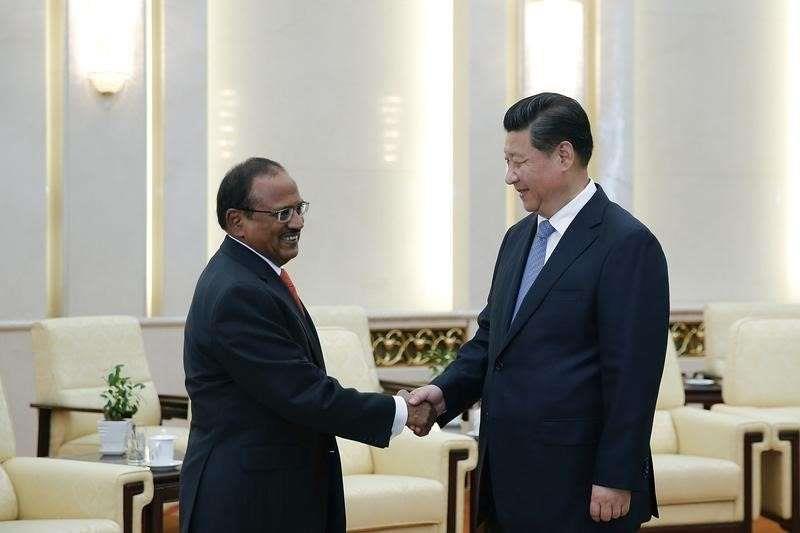June 11, 2015
NEW DELHI – The use of force or military intervention -held in abeyance since the end of the Second Gulf War-is back in interstate relations. This is demonstrated eloquently by the resort to what can be termed as 'hot pursuit' by the elite corps of the Indian Army.

June 11, 2015
NEW DELHI – The use of force or military intervention -held in abeyance since the end of the Second Gulf War-is back in interstate relations. This is demonstrated eloquently by the resort to what can be termed as 'hot pursuit' by the elite corps of the Indian Army.

An elite commando group entered Myanmar territory and eliminated scores of militants. A militant attack on Indian troops in Manipur a few days ago apparently provoked the attack inside Myanmar. Coincidentally, the United States has overcome its reluctance to military intervene against the ISIS and has established a military base in Iraq.
These two cases are purely coincidental but suggest that force as an instrument in statecraft is back in international relations. Historically, the use of force in international relations is hedged and qualified.
The United Nations Charter expressly forbids the use of force in interstate relations. Sovereignty is held to be a cardinal maxim that cannot be violated. This 'rule' was breached by the United States after 11 September when the country's homeland was attacked. The United States retaliated by attacking Iraq, deposing Saddam and occupying the country. The United States over rode International law and went to war under the rubric of pre-emptive war. Pre-emptive war is legitimated when a state has intelligence regarding the intentions of another (hostile) state and when an attack is imminent.
The Myanmar hot pursuit appears to have taken a leaf from the United States' pre-emptive doctrine and attacked militant outfits in Myanmar in defiance of sovereignty and it could be said even international law. The state has gone further and asserted that the Myanmar operation was not an isolated one; it would hold in the future too against hostile states and groups.
What can be inferred and extrapolated from this activism by the Indian state?
First, it would appear, India is not reluctant over the projection of force across borders. The architect of this activism, if press reports are to be believed is Ajit Doval, the National Security Advisor to the government. This means that India's National Security doctrine has undergone a radical shift and departure. It has shifted gears from being reactive to aggressive. The approach meshes and gels with India's aspirations for regional hegemony.
Second, at the risk of repetition, it means that force is once again de rigeur in international relations. However, the major insight appears to be that regional hegemons or aspirational regional hegemons will take it upon themselves to settle conflicts and disputes within the ambit of their respective regions.
This would be a departure from past practice of taking recourse to pleading with or seeking help from global powers for dispute settlement or conflict resolution. In this sense, force and power projection become the locus around which states settle or arbiter their conflicts and from a broader perspective and canvas accrues from United States' relative decline and even quasi isolationism.
The third point that flows from this is the 'security dilemma' and the attendant arms races become prominent again. The security dilemma is a spiral that accrues when one state's attempts to maximize security and power induces the other state or states to do the same. Arms racing are a natural concomitant to the security dilemma. The world or at least the South Asian region is then back to square one. The region now risks being a heavily militarized region with potential implications for the alliance system(s) in the region.
All this suggests a bleak future for the subcontinent. But the major consequences will be between archrivals India and Pakistan. Will the Doval doctrine and the signaling inherent in it make Pakistan cower?
Unlikely is the answer. The Pakistani state is primed for conflict with India. And toward this end, Pakistan to gain parity with India has acquired nuclear weapons. This neutralizes India's superiority in conventional forces and leads to a deterrence paradigm between the two countries.
So India is unlikely to replicate the Myanmar experience with Pakistan unless it wants to disturb and throw out of kilter the deterrence balance that holds. Disturbing this would axiomatically lead to a nuclear conflagration in the region-a prospect that rationality suggests both countries should shy away from.
The statements emanating from the Indian state's defence establishment then are in the nature of rhetoric and posturing.
Or, in the least, one would hope that it is mere posturing. If, however, there is more to the statements other than signaling, there are reasons for despair.
The subcontinent will fall victim to a more militarized rivalry and could well become the 'most dangerous place on the earth'. This is a condition that serves none and should be averted. Prudence then dictates that sobriety and a sense of proportion informs inter state relations both in the subcontinent and the world at large.
Courtesy: PTI







































































































